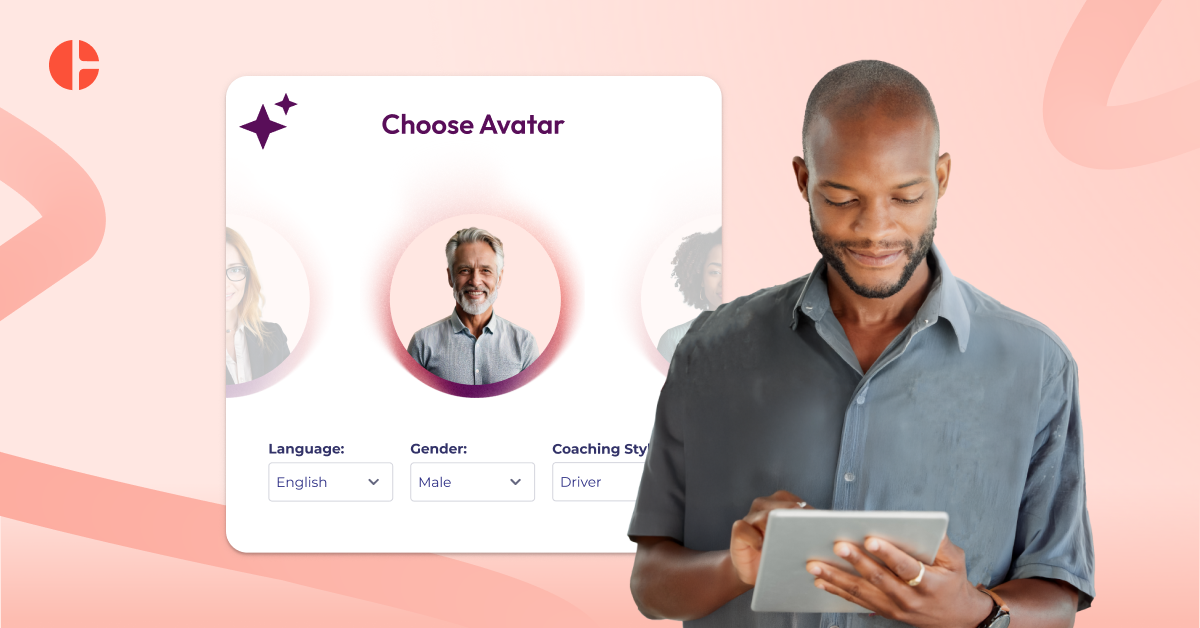Efficiency Meets Engagement: Mastering Digital Onboarding for New Talent

In the dynamic landscape of talent acquisition and employee retention, effective onboarding has become a critical factor for success. Traditional onboarding methods, with their paperwork, one-size-fits-all approach, and manual processes, no longer align with the expectations of modern employees or the needs of forward-thinking organisations. In this article, we'll explore how "Efficiency Meets Engagement" in digital onboarding is revolutionising the way companies integrate new hires into their teams.
The Changing Landscape of Employee Onboarding
Evolving Expectations
New hires today come into organisations with different expectations compared to previous generations. They seek a seamless and engaging onboarding experience that reflects the company's culture and values. They want to feel valued and included from day one, and they expect tools and technologies that make their onboarding journey efficient and enjoyable.
Shortcomings of Traditional Onboarding
Traditional onboarding processes, often characterised by heaps of paperwork, lengthy orientations, and information overload, fall short of meeting these expectations. Such methods can be time-consuming, disengaging, and may even lead to new employees feeling overwhelmed or disconnected from the organisation.
The Need for Digital Solutions
Recognizing the need for a change, organisations are turning to digital solutions to transform their onboarding processes. Digital onboarding, with its emphasis on efficiency and engagement, is the answer to the challenges posed by traditional methods.
Digital Onboarding Essentials
Before delving into the specifics of "Efficiency Meets Engagement," it's essential to understand what digital onboarding comprises. At its core, digital onboarding involves the use of technology and automation to streamline the employee orientation process. Here are the key components:
- Electronic Documentation: Digital onboarding replaces physical paperwork with electronic documents. New hires can complete forms, agreements, and tax documents online, reducing the hassle of printing, scanning, and mailing.
- E-Learning Modules: Online modules and courses introduce new hires to the company's policies, culture, and job-specific knowledge. These modules can be tailored to individual roles, ensuring that each employee receives relevant information.
- Automated Workflows: Digital onboarding platforms automate the flow of information and tasks, ensuring that the right information reaches the right people at the right time. This reduces the chances of administrative errors and delays.
- Personalisation: One of the key advantages of digital onboarding is its ability to offer a personalised experience for new hires. This personalisation extends to every aspect of the onboarding journey, from training modules to company introductions.
The Efficiency Factor: Streamlining Onboarding Processes
Efficiency lies at the core of successful digital onboarding. By harnessing the power of technology to automate repetitive tasks and simplify complex processes, organisations can significantly reduce the time and effort required for onboarding, thus ensuring a smoother transition for new hires.
How Digital Tools Streamline Administrative Tasks
Digital onboarding tools play a pivotal role in automating cumbersome administrative tasks that have traditionally burdened HR departments. These tools seamlessly handle activities like document collection, verification, and secure storage, transforming a once paperwork-laden process into a streamlined, digital workflow.Imagine a scenario where new hires no longer need to manually fill out stacks of paperwork, print, sign, and scan documents. With digital onboarding, they can conveniently complete all necessary forms and agreements online, from the comfort of their own homes or offices. This not only eliminates the hassle of physical paperwork but also accelerates the onboarding process.Furthermore, digital tools ensure the accuracy and completeness of collected information. They can instantly validate data, reducing the likelihood of errors that can arise from manual data entry. This not only saves time but also enhances data integrity, a crucial aspect of a well-functioning onboarding process.
Benefits of Automation in Onboarding
The advantages of automation in onboarding extend well beyond time savings. Here are some key benefits:
- Timely Information Delivery: Automation ensures that new hires receive all the necessary information promptly. Whether it's company policies, benefits enrollment, or compliance documentation, employees can access what they need precisely when they need it. This not only reduces waiting times but also empowers new hires to become productive contributors more swiftly.
- Error Reduction: Automation dramatically reduces the risk of errors inherent in manual processes. Incorrectly entered data, missing signatures, and overlooked forms become things of the past. As a result, organisations can maintain data accuracy and compliance with greater confidence.
- Focus on Strategic Tasks: With administrative tasks streamlined, HR teams can redirect their energy and expertise toward more strategic aspects of onboarding. They can dedicate more time to nurturing employee engagement, providing personalised support, and fine-tuning the onboarding experience.
- Regulatory Compliance: In an era of ever-evolving regulations, compliance is paramount. Automated onboarding systems can ensure that all regulatory requirements are met consistently, reducing the organisation's exposure to legal risks.
By embracing automation, organisations not only expedite the onboarding process but also elevate the quality and reliability of the entire experience. This sets the stage for new hires to start their journey with the company on a positive note, free from the frustrations and inefficiencies of traditional onboarding methods.
The Engagement Factor: Creating Personalised Onboarding Experiences
While efficiency is a critical component of successful onboarding, it alone is not sufficient. Engagement is equally crucial in ensuring that new hires feel genuinely welcomed, valued, and aligned with the organisation's culture and goals.
The Importance of Personalisation
Recognizing that every new employee is a unique individual with distinct needs, expectations, and backgrounds is vital in the context of onboarding. One-size-fits-all approaches to onboarding can leave new hires feeling disconnected and undervalued. Digital onboarding steps in to address this challenge by offering organisations the ability to tailor the onboarding experience to each individual.Imagine a new hire who has specific goals, preferences, and learning styles. In a personalised onboarding experience, their journey might begin with a welcome message that addresses them by name and outlines a roadmap customised to their role. Training modules and resources could be chosen based on their current skill level and future development aspirations.This personalisation doesn't stop at content selection. It extends to the way information is presented, the pace at which it's delivered, and the opportunities for interaction and feedback. By accommodating these individual differences, organisations can create a sense of belonging and relevance from day one, fostering a stronger emotional connection between new hires and the company.
Digital Coaching for Engagement
One of the most potent tools for achieving engagement-driven onboarding experiences is digital coaching. This approach goes beyond the mere provision of information and involves one-on-one or group interactions with new hires.Digital coaches act as mentors and guides, providing personalised support and feedback tailored to each new hire's unique journey. Whether it's answering questions, offering advice, or helping new hires navigate the complexities of their roles, digital coaching adds a human touch to the onboarding process.Imagine a scenario where a new hire can schedule a virtual meeting with their digital coach to discuss their onboarding progress, share concerns, and seek guidance on career development within the organisation. These interactions can be a powerful way to build trust and rapport, essential elements of engagement.Furthermore, digital coaching can facilitate peer-to-peer interactions among new hires, creating a sense of community and camaraderie. Group discussions, virtual team-building activities, and collaborative projects can all be facilitated through our digital coaching platform, enhancing engagement and social integration.In essence, digital coaching transforms the onboarding process into a dynamic and interactive experience, where engagement flourishes, questions find answers, and new hires feel connected to their colleagues, mentors, and the broader organisational culture.
Leveraging Digital Coaching Beyond Onboarding
Digital coaching's benefits extend beyond the initial onboarding phase. It can be a valuable resource for ongoing employee development, making it an indispensable tool in implementing and maintaining a digital onboarding program.
Supporting Ongoing Employee Development
After the initial onboarding, employees need continued guidance and support to grow within the organisation. Digital coaching can provide ongoing mentorship, skill development, and career planning.
Bridging the Gap Between Onboarding and Integration
Digital coaching can help bridge the gap between the structured onboarding period and full integration into the team. It ensures that employees continue to feel supported and engaged throughout their journey.
Enhancing Employee Retention
Organisations that invest in digital coaching not only have a smoother onboarding process but also experience higher employee retention rates. Employees who feel supported and engaged are more likely to stay with the company in the long term.
Tools and Technologies for Digital Onboarding
To effectively implement digital onboarding and leverage digital coaching, organisations need the right tools and technologies. Here's a look at some popular options:
Onboarding Platforms
Dedicated onboarding platforms like "Onboardr" or "TalentLaunch" offer end-to-end solutions for digital onboarding, including document management, e-learning, and automation.
Learning Management Systems (LMS)
LMS platforms such as "Moodle" and "Canvas" can be customised for employee training and onboarding, making them versatile tools for digital onboarding programs.
Best Practices for Mastering Digital Onboarding
Implementing digital onboarding and leveraging digital coaching effectively require careful planning and execution. Here are some best practices to consider:
- Start Early: Begin the onboarding process before the employee's first day to ensure a smooth transition.
- Customise the Journey: Tailor the onboarding experience to the individual's role, needs, and goals.
- Foster Communication: Encourage open communication between new hires, mentors, and team members.
- Measure and Iterate: Use data and feedback to continuously improve the onboarding program.
- Ensure Security and Compliance: Maintain data security and adhere to legal compliance throughout the onboarding process.
Measuring Success: Metrics and Key Performance Indicators (KPIs)
To gauge the impact of digital onboarding and digital coaching, organisations should track key metrics and KPIs. Here are some to consider:
- Time to Productivity: Measure how long it takes for new hires to become fully productive in their roles.
- Employee Satisfaction: Gather feedback from new hires to assess their satisfaction with the onboarding experience.
- Employee Retention: Monitor employee retention rates to determine if the onboarding program is contributing to long-term engagement.
- Compliance: Ensure that all regulatory and compliance requirements are met throughout the onboarding process.
- Training Completion Rates: Track the percentage of new hires who complete required training modules and courses.
Overcoming Challenges and Pitfalls
Implementing digital onboarding and digital coaching is not without its challenges. Here are some common hurdles and strategies to overcome them:
- Resistance to Change: Some employees may resist transitioning to digital processes. Address this by providing comprehensive training and support.
- Technical Issues: Ensure that the chosen onboarding tools and platforms are user-friendly and reliable to minimise technical difficulties.
- Data Security Concerns: Implement robust security measures to protect sensitive employee data and address privacy concerns.
- Maintaining Engagement: To sustain engagement beyond onboarding, organisations should continuously promote a culture of learning and development.
Future Trends and Innovations in Digital Onboarding
The world of digital onboarding and coaching is continuously evolving. Here are some trends and innovations to watch for:
- AI and Machine Learning: Expect to see more AI-powered onboarding platforms that can provide personalised recommendations and insights.
- Virtual Reality (VR): VR can create immersive onboarding experiences, allowing new hires to virtually explore their work environment.
- Mobile-First Solutions: As mobile devices become ubiquitous, onboarding platforms will increasingly cater to mobile users.
- Data Analytics: Advanced analytics will play a more significant role in optimising the onboarding process and measuring its impact.
Conclusion
"Efficiency Meets Engagement" in digital onboarding is a transformative concept that has the potential to reshape the way organisations welcome and integrate new talent. By combining the power of automation, personalisation, and digital coaching, companies can create onboarding experiences that not only streamline processes but also foster engagement and long-term success.As organisations continue to adapt to the evolving demands of the workforce, mastering digital onboarding will be a crucial competitive advantage. It's time to embrace the future of onboarding and harness the efficiency and engagement that digital solutions offer.
FAQ
Yes, executive coaching plays a key role in retaining and engaging senior leaders by giving them space to reflect, grow, and lead with purpose. Through individualised support, executives strengthen communication, decision-making and resilience — all of which drive engagement and long-term satisfaction.
With CoachHub Executive™, organisations not only see improved leadership performance but also greater alignment, motivation and confidence among their top talent, resulting in higher retention and a stronger leadership pipeline.
CoachHub Executive™ goes beyond one-to-one sessions by integrating technology, measurable insights and continuous learning into every coaching journey. Each executive benefits from personalised matching with certified coaches and flexible session formats to reinforce development between sessions.
While traditional coaching often lacks scalability or measurable tracking, CoachHub ensures impact visibility through data-driven dashboards, 24/7 scheduling flexibility and a consistent, high-quality experience for leaders worldwide, that can be tailored to your organisation's goals.
Yes, executive coaching is delivered across 90 countries in 40+ languages, with localised coach networks that meet the cultural and business needs of global organisations.




.svg)


.svg)





.png)



